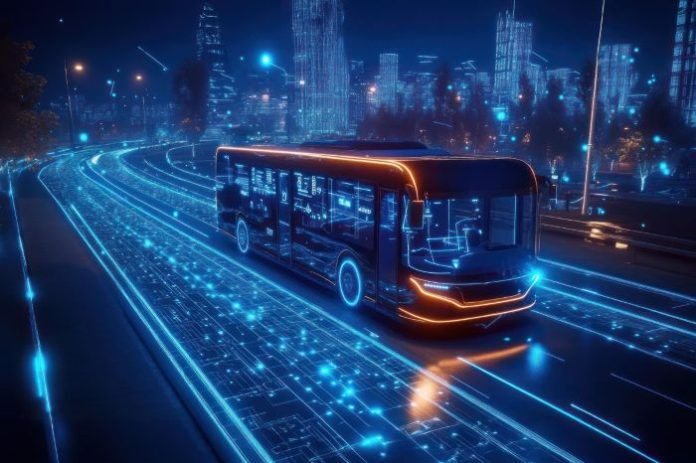Today’s modern buses are more advanced than ever. From collision-avoidance systems to onboard cameras, modern public transportation relies heavily on technology designed to make travel safer for everyone on the road. Yet even with these improvements, bus accidents still happen — and when they do, the very technologies meant to prevent crashes often become central pieces of evidence.
Understanding how this technology works can help victims make sense of what happened, determine who may be liable, and strengthen the legal claims that follow. But in some situations, these same systems can introduce unexpected complications, especially if the technology malfunctions or contradicts witness accounts.
Modern Safety Systems on Buses
Modern buses are equipped with an array of smart systems intended to reduce human error and improve response times. These features may include:
- Forward collision warning
- Automatic emergency braking
- Lane departure alerts
- Pedestrian detection technology
- Electronic stability control
- Real-time telematics monitoring
These innovations can significantly reduce crash risks — but they are not foolproof. A system that fails to warn the driver, delays braking, or misinterprets road conditions may contribute to the severity of a crash.
The Role of Onboard Cameras and Recorders
Most modern buses now have multiple high-definition cameras both inside and outside the vehicle. These cameras often capture:
- Driver behavior
- Passenger activity
- Road conditions
- Surrounding traffic
- The moments leading up to and following a collision
Additionally, “black box” recorders collect data such as speed, braking force, steering movements, and more. This information can be invaluable when reconstructing what happened.
For individuals injured in a bus accident, this footage can serve as irrefutable evidence — proving negligence, revealing unsafe driving practices, or demonstrating a failure of onboard technology.
How Technology Can Strengthen Your Claim
In many cases, modern bus technology makes injury claims stronger by providing clear, unbiased documentation. Instead of relying solely on witness statements, attorneys can reference:
- Video footage showing driver distraction or misconduct
- Speed data revealing whether the bus was traveling too fast
- Telematics data showing sudden maneuvers or hard braking
- GPS logs confirming route deviations or delays
- Diagnostic records reflecting system failures
This digital evidence can counter false claims, reduce disputes over liability, and support arguments for fair compensation.
When Technology Complicates a Modern Bus Accident Case
While technology often helps, it can also complicate a claim in several ways:
1. Conflicting Data
Video footage might show one thing while sensor data suggests another. This inconsistency can lead to disputes requiring expert analysis.
2. Missing or Corrupted Footage
Sometimes footage is overwritten, damaged, or conveniently “lost.” Determining whether this is accidental or intentional becomes a critical part of the investigation.
3. System Malfunctions
If an automatic braking system failed, was the bus driver responsible — or the manufacturer? Cases involving defective technology may require extensive investigation into maintenance records and software updates.
4. Partial Data Access
Transit systems may resist releasing certain data, claiming confidentiality or technical limitations. Legal action may be necessary to obtain it.
Mechanical and Maintenance Records Matter Too
In addition to high-tech tools, traditional mechanical factors remain important. Attorneys often examine:
- Brake and tire condition
- Steering and suspension health
- Maintenance logs
- Repair histories
- Inspection compliance
A poorly maintained bus — even one loaded with advanced technology — is a hazard. If maintenance errors contributed to the accident, liability may extend to the bus company, contractors, or repair technicians.
Multiple Parties May Be Responsible
Bus accident claims often involve more than one liable party, such as:
- The bus driver
- The transportation company
- Maintenance contractors
- Bus manufacturers
- Technology developers
- Government agencies (for public buses)
- Other drivers involved in the collision
Because multiple parties may share responsibility, the presence of advanced technology makes determining fault more complex — but also more precise.
Why Legal Guidance Matters in Tech-Heavy Claims
Bus accidents involving modern technology require a detailed analysis and often the expertise of industry professionals. Attorneys need to have a solid understanding of personal injury law, as well as the ability to interpret black box data, evaluate software performance, and determine if safety systems functioned as intended.
Victims who try to pursue claims without legal representation risk being overwhelmed by technical reports, complex liability issues, and aggressive tactics from insurance companies. A strategic legal approach ensures that the technology fulfills its purpose—revealing the truth and supporting the victim’s claim.
When Technology Helps Reveal the Reality
Technology has greatly changed modern bus travel, and it has also impacted the process of bus accident claims. In the past, these claims often depended on conflicting witness accounts. Now, however, they frequently involve digital evidence that can provide a much clearer narrative. This evidence may reveal issues such as human negligence, mechanical failure, or technological malfunction.
For victims, understanding how this technology works and its relevance to their case can significantly affect the outcome. It can mean the difference between an uncertain result and a claim based on solid, undeniable facts.











